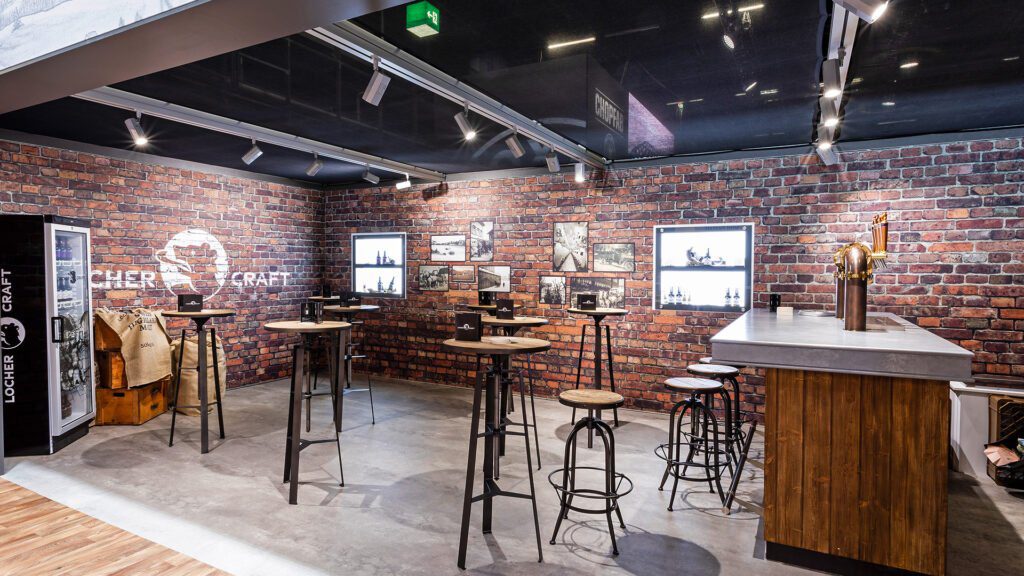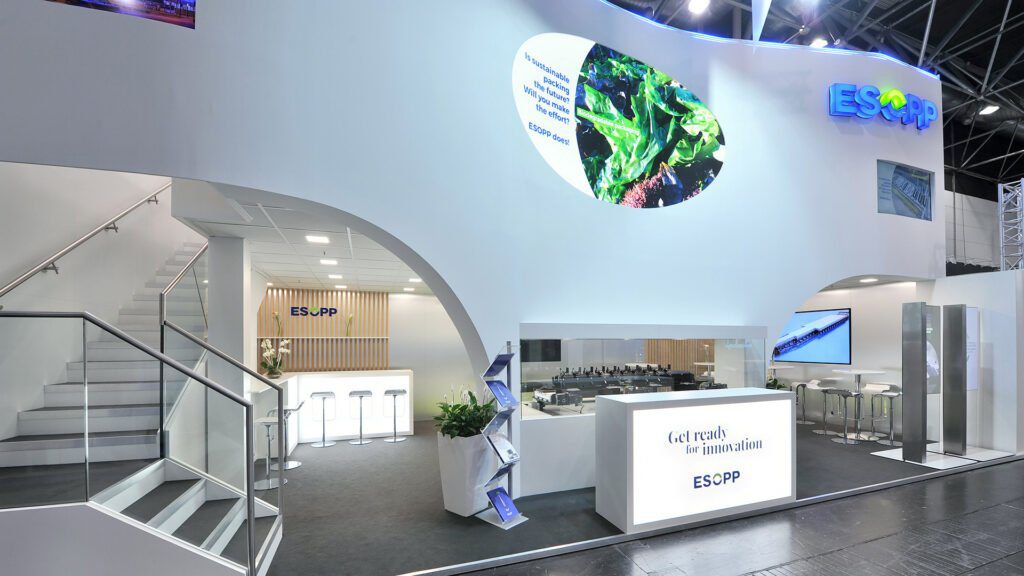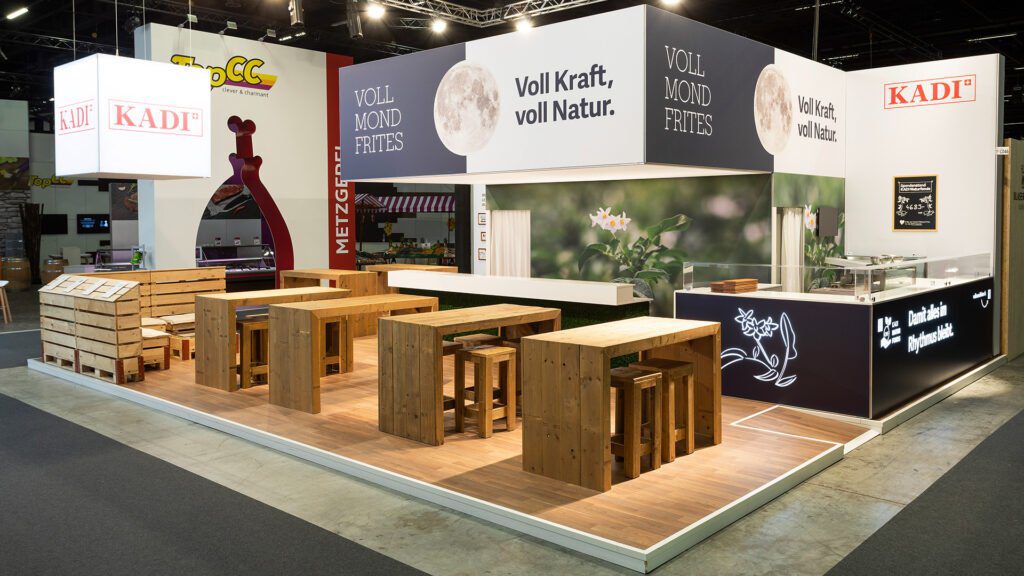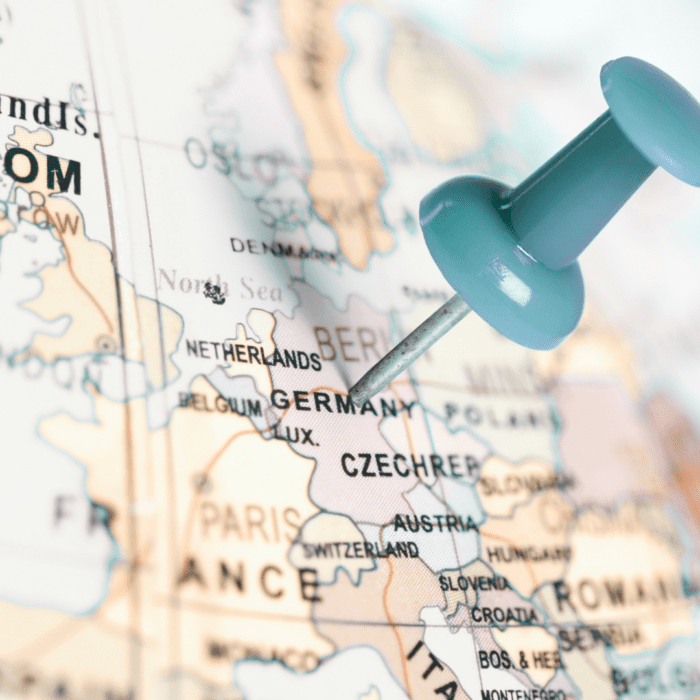If you’ve already read our first article on storytelling at the trade fair stand, you’re already familiar with the basics of a good story and the guidelines for successful staging. In the second part of our blog series, we will now share some important tips for storytelling at the trade fair stand, which will help you with the practical implementation for your next event.


A holistic concept
In order to be able to tell your story coherently and completely, a well thought-out concept should already be created in the planning process, which takes even inconspicuous details into account. From the ceiling elements to the lighting design, the furniture, graphics, colours, the clothing of the stand personnel and the floor on which you stand, everything must be coordinated and consciously designed.
An example of a concept with a focus on nature and sustainability:
Shades of green in various degrees of brightness are the main colors. Natural but bright lighting and plants make it feel like you’re actually outdoors. Large pictures from nature tell their very own stories and, together with a subtle scent of rain air and fir branches, awaken the desire for a walk in the woods. To keep this story coherent, even the packaging and giveaways are made of sustainable materials. The sustainability aspect is given a special emphasis by a trade fair stand with an eco-label.
Immersion and participation
If the concept and the story are right, the next step is to really inspire people. To do this, they must become part of the story themselves and actively live it. In order not to turn the fair visitors into unwanted actors, there are all kinds of activating and stimulating ideas to make the narrative tangible and tangible. Digital integrations at the trade fair stand, such as videos, podcasts, virtual product presentations or factory tours, open up a world with endless storytelling possibilities. Our SYMA meet-hybrid Studio Cube or the SYMA BLACKBOX make the implementation of virtual and immersive experiences at trade fairs simple yet inspiringly effective. But be careful! The infinite variety of possibilities leads to the temptation to want to integrate everything and so the special wow effect quickly turns into an uncontrolled sensory overload. The desired goal is a careful balancing act – the target group must be addressed with a finger on the pulse of the times, but also with appropriate, adequate emotions. Games, puzzles, (tasting) samples or inviting photo points are suitable analogue supplements for this purpose, in order to bring the fair visitors into the story.


Provoke and inspire
A good story lives from the emotional mood I just mentioned. This especially includes conflicts and problems that the main characters have fought their way out of. For example, negative experiences can also be used for storytelling at the trade fair stand if success can be associated with them. It takes a lot of courage to break with the usual – but this is the only way to consciously evoke emotions. After all, that’s the goal of storytelling, because we predominantly remember those stories that are exciting, sad, annoying, funny, happy, or unusual. Here, too, special caution is required, since one can never know exactly what effect the triggering of strong emotions can have on the other person in his or her life situation. Therefore, in addition to courage, a fine sense and good knowledge of human nature is required.


The correct structure of the story
Less psychology but more knowledge from German lessons is needed for the basic structure of storytelling. A good story needs, in addition to the emotional tension in the main part, an introduction that arouses interest and a rounded, activating conclusion. The first impression of your trade fair stand, whether from a distance or only when you enter the stand, must immediately make you want more. Sympathy and curiosity are the key words here. The end then shapes the lasting overall impression on the trade fair visitor. Ideally, therefore, the added value of the product is summarised once again and, ideally, a direct call to action also follows here.


Brainstorming: tips for storytelling at the trade fair stand
All beginnings are difficult – the theory is already understood, but for the practice no idea for a suitable narrative has emerged yet? In that case, here are a few more questions for you to help brainstorm:
- Are there already stories in/of your company that are told for promotional purposes, on the homepage or during presentations? Can these be extended for a trade fair stand?
- What is the story behind the brainstorming of your product? How did it come about?
- What are the needs of your customers? What problems do you help them with?
- What are the values of your company? What do you stand for and why?
- What are your goals for the future? Is there a vision that can be wrapped up in a story?
- What images and metaphors should be associated with your products or your company?
The answers to these questions already provide a necessary basis for your successful storytelling at the trade fair stand. The SYMA team, together with our partner and expert for staging, Michael Kremnitzer, will actively support you from the first idea to the implementation with many years of know-how. Contact us and we will help you create the right story for your trade fair stand.





